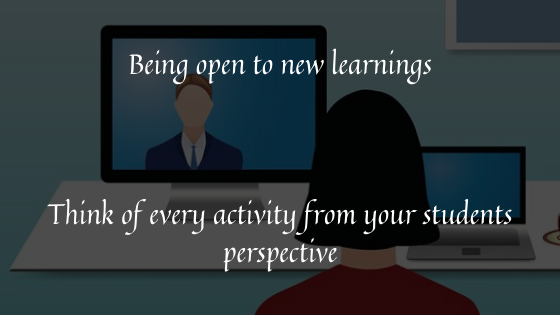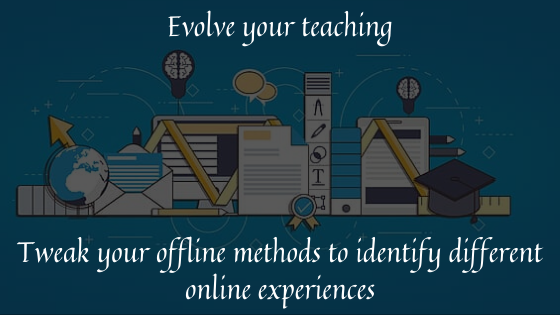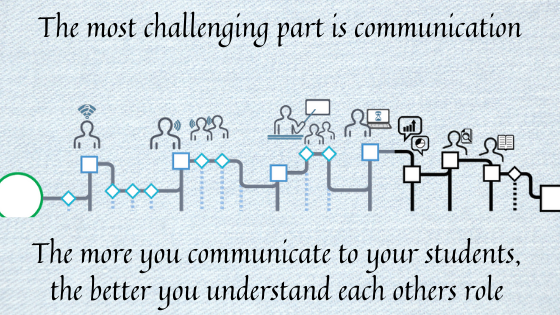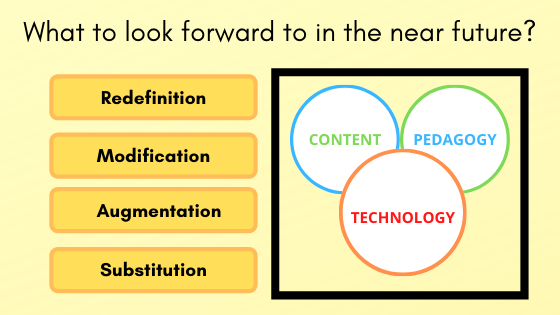Essential practices and principles to improve online teaching

Each time I speak to a professor of an institution, the challenges faced by them have been very intriguing. The conversations have been truly open and insightful which made us take note of their challenges and look through online teaching references to come up with this blog piece. This booster kit, as I would like to call it, has been born out of the experiences that the coronavirus pandemic has put everyone through.
The objectives of this blog are fairly simple
• To highlight essential practices for the education community that has been forced to adopt online facilities with ripple effects.
• To help educators and professors reflect on their online teaching ever since the lockdown and compare it with these tips for future modifications or improvements.
Innovate and Evaluate
In due course of developing and selling at VROOK (An Immersive online learning platform), one thing that clearly stands out is - we would have spent years in campus classrooms, but it is important to realize that the same depth and breadth of experience in the online classroom exists, as either students or teachers.
It is an experiment that will yield results that are unexpected and surprising (more often than not), but it is a process that is needed to innovate better outcomes. Most of the professors admit to not knowing how to associate with this sudden change, but each one of them can evaluate their experiences, learn to be flexible, and open up to the benefits that technology can offer.
At VROOK, we have identified 3 essential Practices and Principles that can help in improving online teaching!
1. Understanding the student challenges (Put yourself in their shoes)
Your online students aren’t physically near you or with other students when they’re “in class.” In a physical classroom, you can pick up on a few cues from your observations and experience. Are your students bored? confused? You can observe the signals and adjust what you’re teaching and probably repeat the explanation.

But when students are attending your class online, they could be puzzling over your explanation of a complex concept, you’re not there in real-time to allay their confusion. You cannot observe when you have lost their attention or when your instructions aren’t clear.
Have the right supplement for your teaching. The resources of study materials, relevant e-learning videos, quizzes, and assessments all in a single platform will enable the student to assimilate your conception in an organized manner.
2. Vary the learning experiences
The prime factor that students miss from their regular campus or in college experience is the presence of their peers next to each other. Educators and professors can vary the learning experiences by taking advantage of this factor, by making peer groups and encouraging better participation from students.

This can also help the subject matter expert understand what works better in terms of assignments, whether to have an individual assignment or a peer activity. This could be a good way to experiment and understand what works and what doesn’t.
When trying to experiment with learning experiences online, all initiatives are good initiatives. Like for example bringing in experts or practitioners from the industry-academia as resources within the course or subject. The engagement can be in different forms, either a live session, or in the form of video clips, online interviews, or as discussion moderators.
3. Establish clear communication
Each student’s learning environment is different during online learning.
It’s always wise to post a weekly announcement to provide an overview of the coming week’s topic or a recap of the previous week’s work or both. It will help establish more connection to the follow up of previous learning and expectations for the next.

If professors/educators are engaging their students with online discussions, then it is worthwhile to adopt or use Socratic Method of teaching, where you’re getting students to cognitively engage with the discussion a little bit more. Instead of just putting something out there and expecting students to give you something back, think about how students can actively engage with the material you’re putting into your online teaching.
What to look forward to in the near future?
Setting appropriate goals & outcomes for online teaching & learning – It is useful to spend a little time thinking about whether you should adopt the goals to take advantage of some of the unique possibilities that online learning offers. These possibilities will vary from subject to subject, but will ultimately contribute to the creativity and innovation of the online pedagogical ecosystem.
Making the right technological choices - As we have seen so far, technology helps drive innovation in teaching and learning. But equally important are the decisions educationists and educators make on how best to use technology, for what purposes to adopt and how they redefine the roles of a professor as a facilitator and the student as a learner.

Aligning our pedagogy, subject matter, teaching style, assessment, and a student’s access and success with appropriate technology will define the landscape of online teaching and learning in the near future.
At VROOK, we adopt blended learning methods to integrate innovative technologies with effective learning principles. We empower institutions to achieve their objectives of online education.
If you found this useful, do let us know what you think of it. It could be the challenges you are addressing, or a unique solution that you have found working, we are all ears.
If you are a professor or a decision-maker of an institution/university, we recommend you to participate in this survey on Covid-19 Challenges and its Impact! Online preferences for Higher Education Institutions to explore in the next academic year. (Link here)

